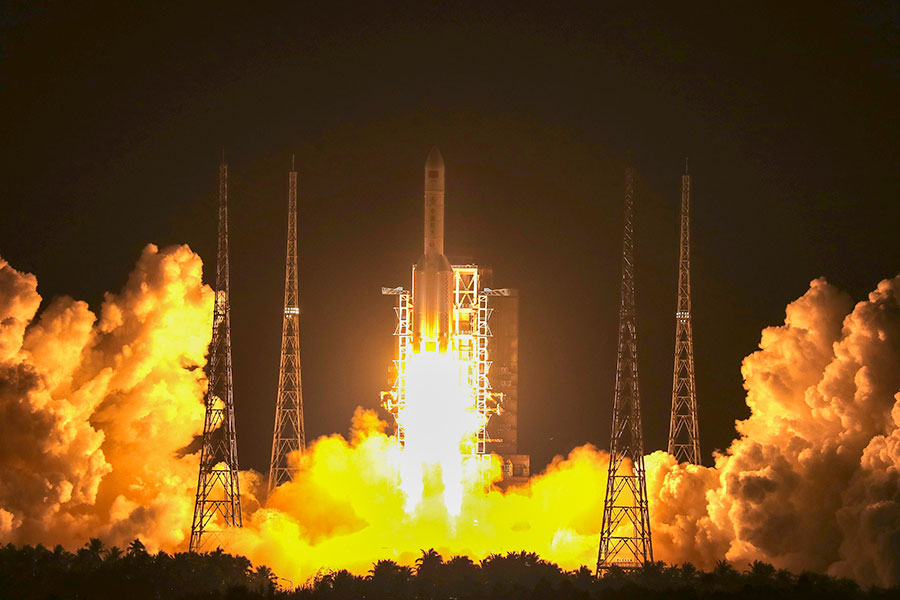Success of Long March 5 significant for world's peaceful use of space: China Daily editorial
China Daily | Updated: 2019-12-29 20:23

For the scientists and technicians directly involved in the process and the public alike, the successful launch of Long March 5, the country's strongest, most technologically sophisticated carrier rocket to date, was more than just a reason for a sigh of relief.
Just like it is being heralded by mainstream media at home, this came in the first place as a precious confidence booster.
After all, the space industry has been one of the few domestic industries that boasts a proud history of continuous, relatively independent and impressively fruitful progress for the past decades.
The success of the Friday night launch was a timely addition to that proud record, and a fresh footnote for the tenacity and vitality it has demonstrated through internal political and economic vicissitudes and external constraints. That was especially true after the July 2017 failure of its second launch.
What we have all witnessed on Friday was the start of the next chapter in that glorious legend contributed collectively by the countless scientific and technological workers in the space industry. Something that carries very special weight at a time when Chinese high-technology industries face threats of outside suppression.
The space industry's stories of success, along with its difficult fumbling in moments of darkness, are a fitting reply to the rising doubts about indigenous research and development.
To many, the Long March 5 was precisely that answer — "we can do it".
The Long March 5's real, more substantial significance, however, lies in the fact that it represents technological breakthroughs that may usher in a brand-new stage in China's space explorations.
Prior to it, the most capable Chinese carrier rocket, the Long March 2-F, could only deliver a payload of 8.6 tons to a low-Earth orbit, an obvious constraint to many of the country's ambitious next-step space activities. The new rocket has more than doubled that capacity, allowing for more daring missions into deep space.
The Long March 5's future missions reportedly include enabling China's fifth and most sophisticated lunar expedition, as well as placing parts of the country's manned space station into orbit.
Almost equally impressive on Friday was the Shijian 20 experimental satellite the rocket carried. It is not only the largest and heaviest home-made satellite, but it is based on a new-generation satellite platform that is expected to be one of the country's core satellite platforms for the next two decades.
The space industry's present success is decades of persistent down-to-earth efforts paying off. It should serve as a constant reminder of the fundamental significance of indigenous research and development.
























